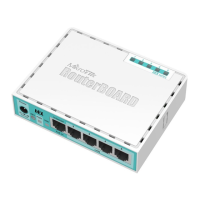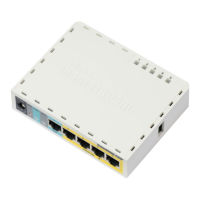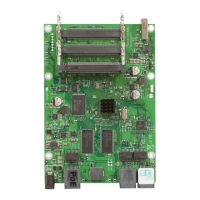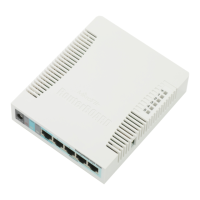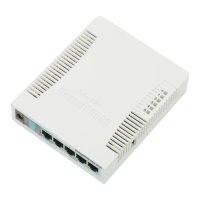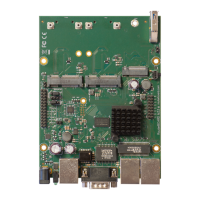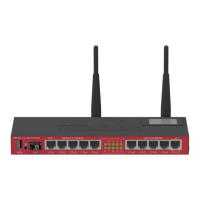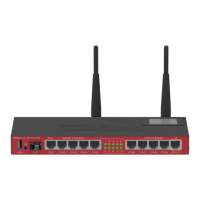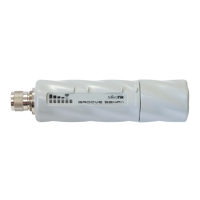RouterBOARD 493 Series User's Manual
address, TFTP server address and boot image name
See the RouterBOOT section on how to configure loader to boot from network.
Note that you must connect the RouterBOARD you want to boot, and the BOOTP/DHCP and TFTP servers to
the same broadcast domain (i.e., there must not be any routers between them).
Operating System Support
MikroTik RouterOS
MikroTik RouterOS, starting from v4.13, is fully compatible with RouterBOARD 493 series embedded boards.
RouterBOOT
The RouterBOOT firmware (also referred as boot loader here) provides minimal functionality to boot an
Operating System. It supports serial console via the onboard serial port at the boot time. The loader
supports booting from the onboard NAND device and from a network server (see the respective section for
details on this protocol).
Boot Loader Configuration
Loader parameters may be configured through the onboard RS232C DB9 asynchronous serial interface. To
connect to it, use a standard null-modem cable. By default, the port is set to 115200bit/s, 8 data bits, 1
stop bit, no parity. Note that the device does not fully implement the hardware (RTS/CTS) flow control, so it
is suggested to try to disable hardware flow control in the terminal emulation program in case the serial
console does not work as expected, and if it does not help, make a new cable using the pinout given in the
Appendix.
To enter the loader configuration screen, press any key (or only [Delete] key (or [Backspace] key – see the
note for the respective configurable option), depending on the actual configuration) just after the boot
loader is asking for it:
RouterBOOT booter 2.9
RouterBoard 493
CPU frequency: 333 MHz
Memory size: 64 MB
Press any key within 2 seconds to enter setup
RouterBOOT-2.9
What do you want to configure?
d - boot delay
k - boot key
s - serial console
o - boot device
f - cpu frequency
r - reset configuration
e - format nand
g - upgrade firmware
i - board info
p - boot protocol
t - do memory testing
x - exit setup
your choice:
To select a menu point, press the key written at the beginning of this line. Pressing [Enter] selects the
option marked with '*'.
Configurable Options
boot delay – how much time to wait for a key stroke while booting (1..9 seconds; 2 second by default).
boot key – which key will cause the loader to enter configuration mode during boot delay (any key |
<Delete> key only; any key by default). Note that in some serial terminal programs, it is impossible to use
the [Delete] key to enter the setup – in this case it might be possible to do this with the [Backspace] key.
7
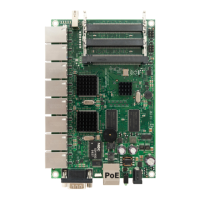
